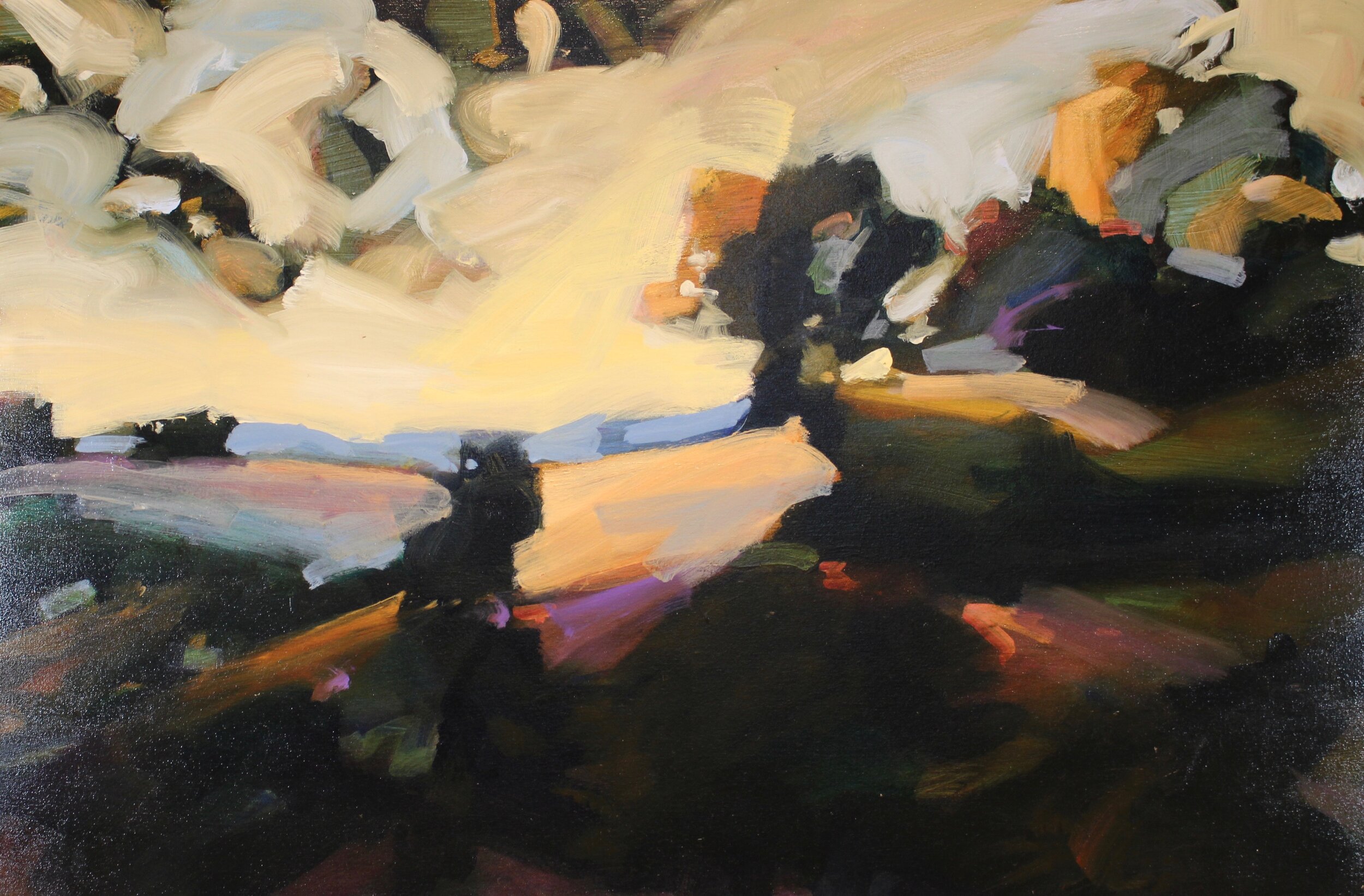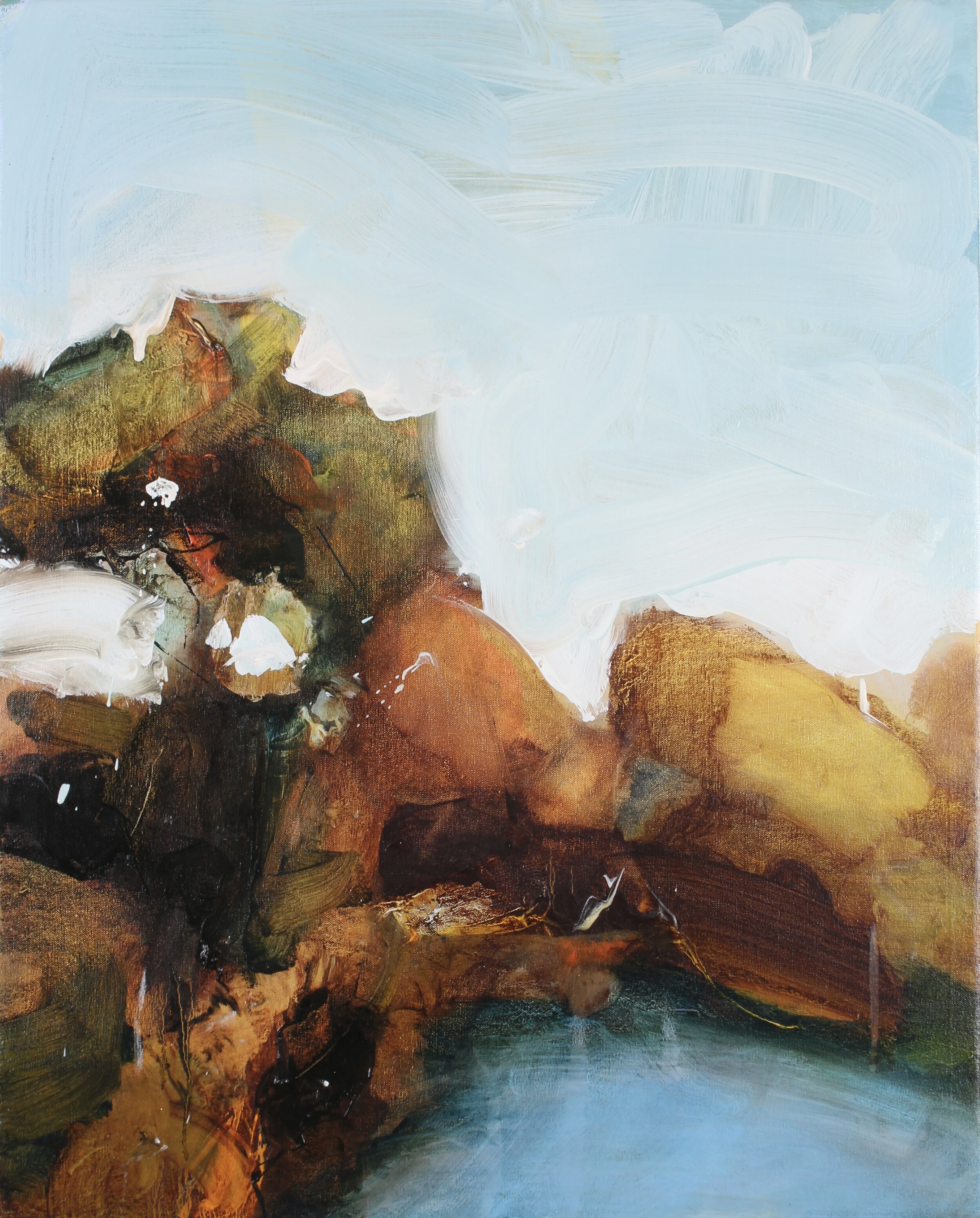In any beautiful dance there’s an element of tension. How does a dancer play with gravity? How do motion and the stillness of equilibrium complement each other? And how does the dance acknowledge its prescribed space while also engaging the space beyond it?
I want to ask the same questions of a painting. If we think of the canvas’s rectangle as an expression of equilibrium, how does the movement of shapes within it engage with the horizontal-vertical axis that contains them? How do they dance? How does energy enter the canvas, and where does it go when it leaves? How do shapes collide or caress? How do colors push forward or recede? Do they enable each other or agree to disagree? Activity and stillness; flatness and depth, warmth and coolness, gravity and flight. What does a painting tell me, or the viewer, to add or subtract? How does it incorporate its historical inheritance and also resist it?
For me, the space of a canvas is like a visual dance floor. If I’m successful, an infinity of possible combinations of shapes and colors can play within the space they occupy, and at the same time imply the space beyond it. My hope is that these possibilities multiply and resonate as the painting enters the bigger world. Its inherent tensions abound and make it something to look at with an open-ended intelligence. A painting that resolved them all for the viewer would be uninteresting.










